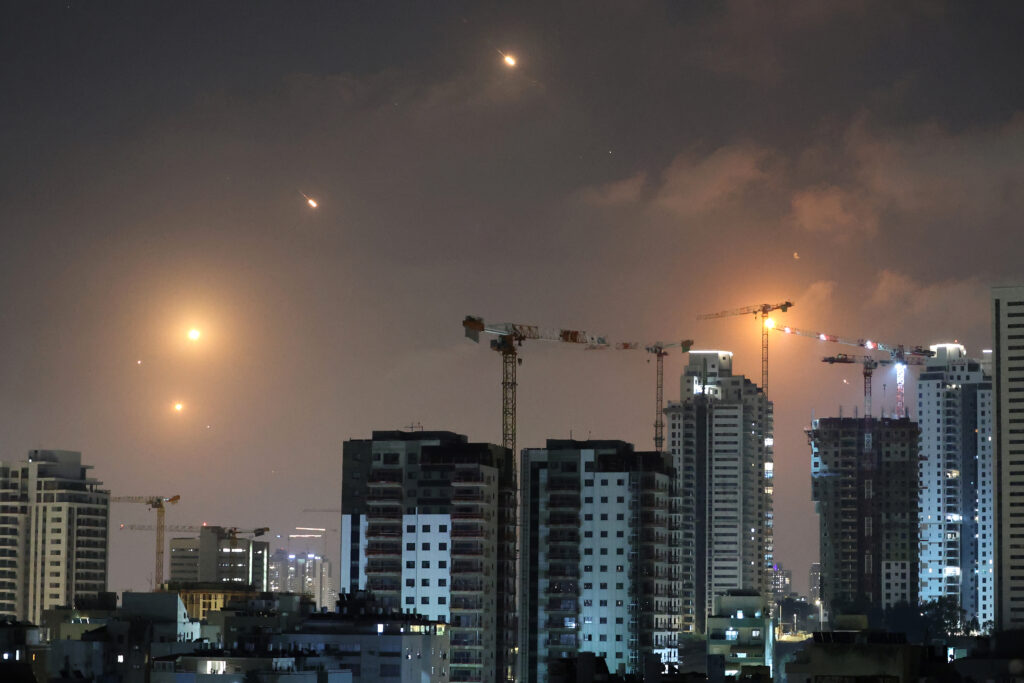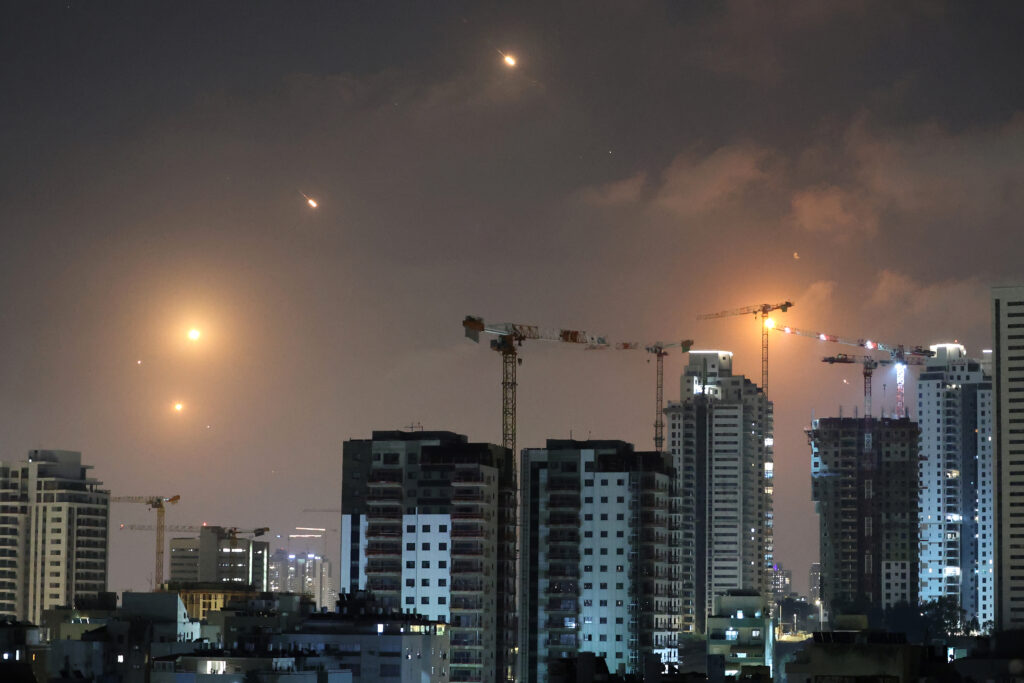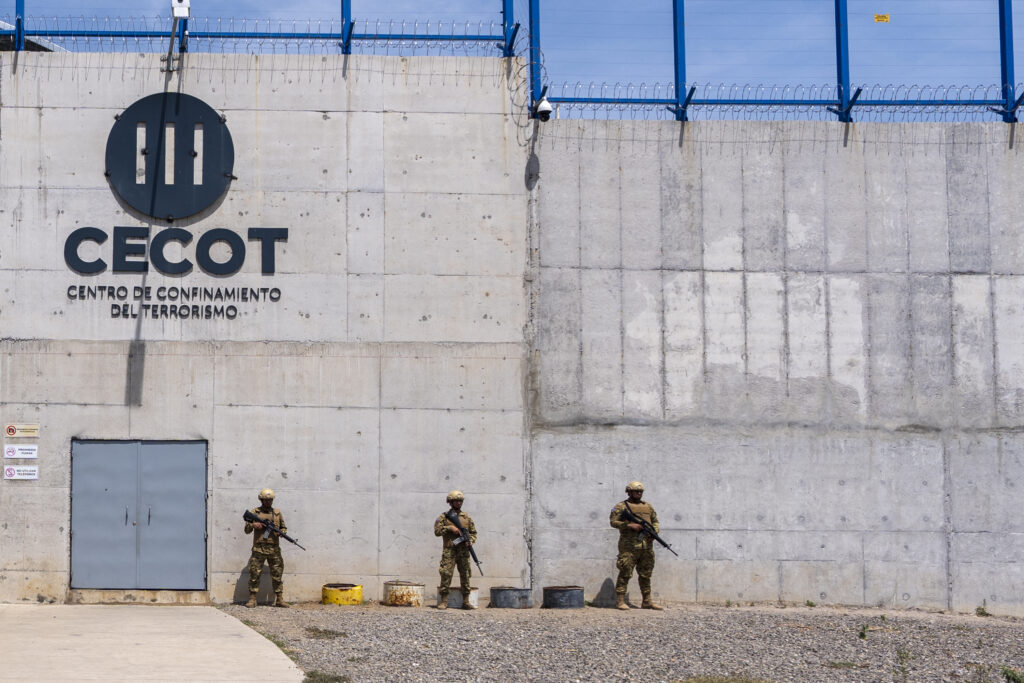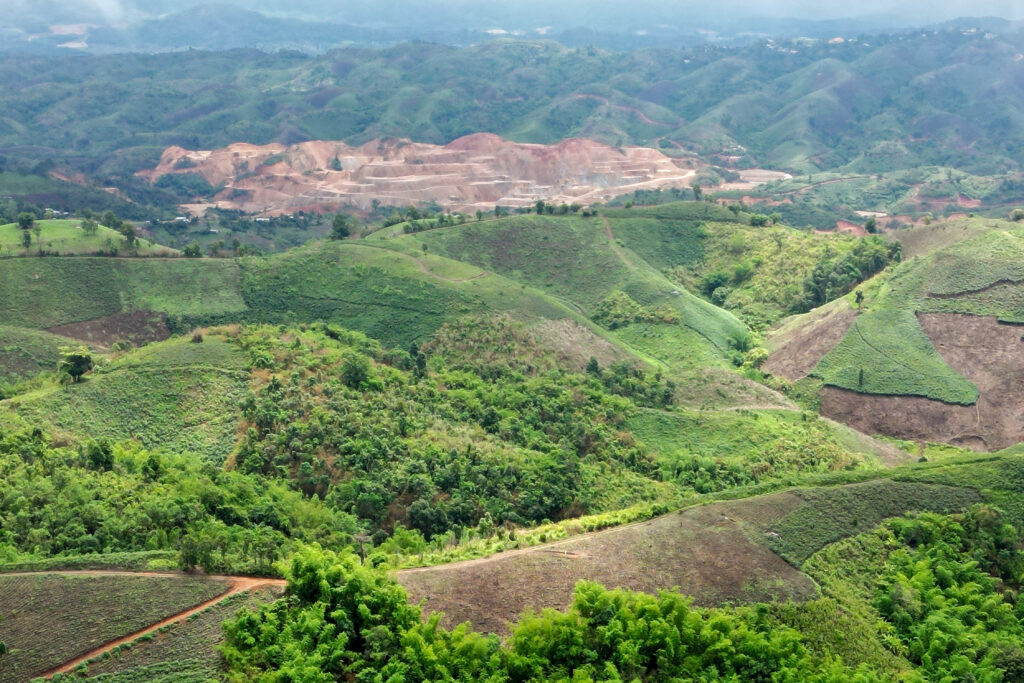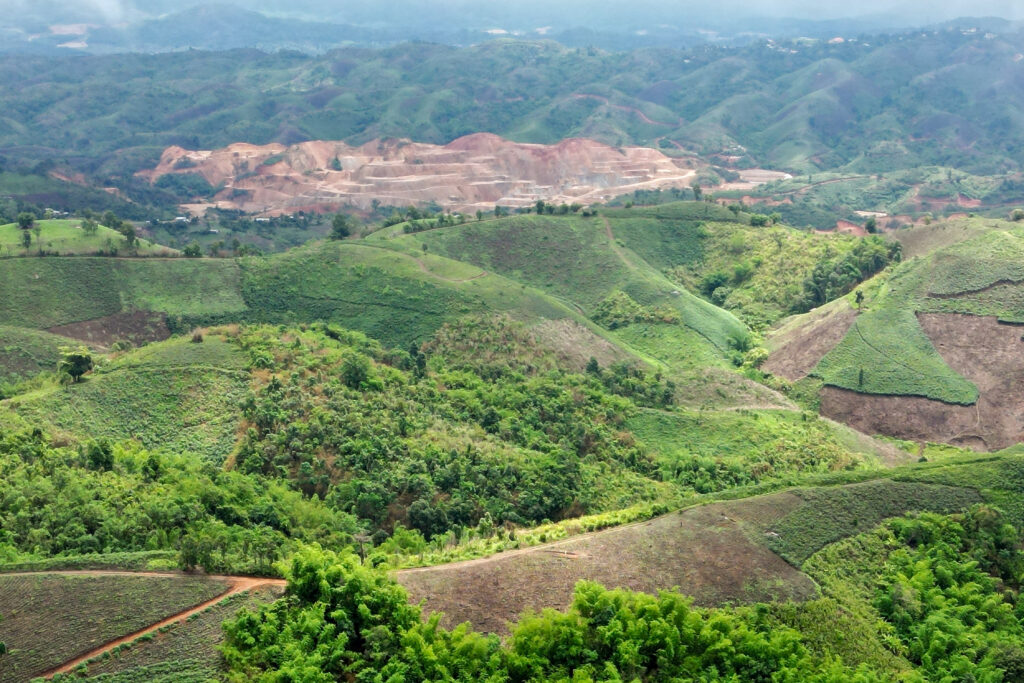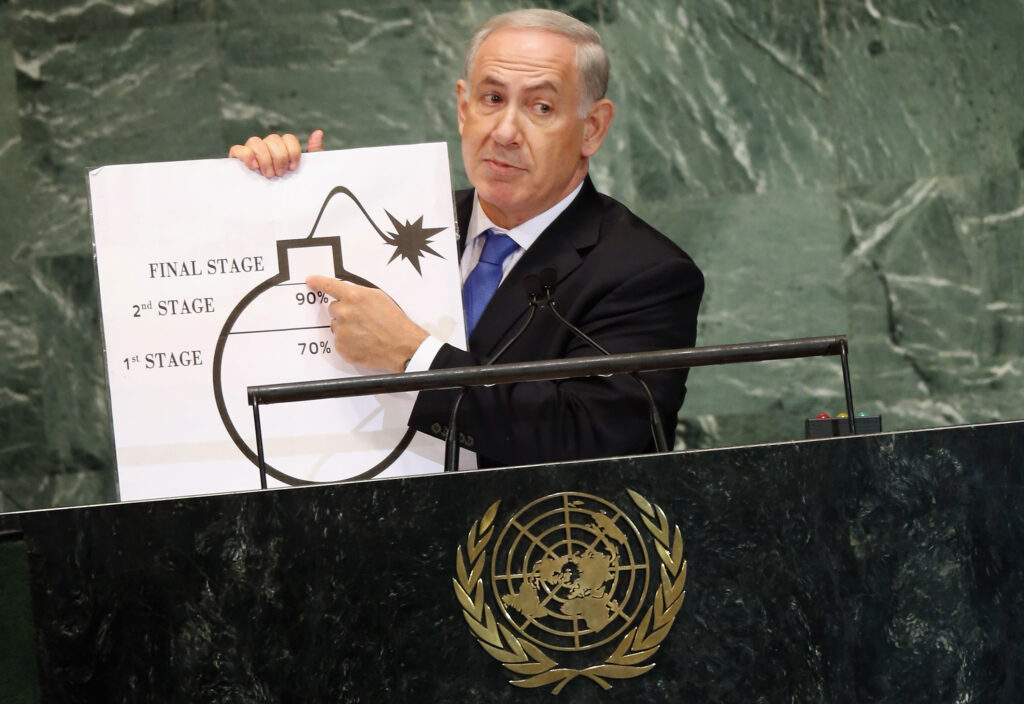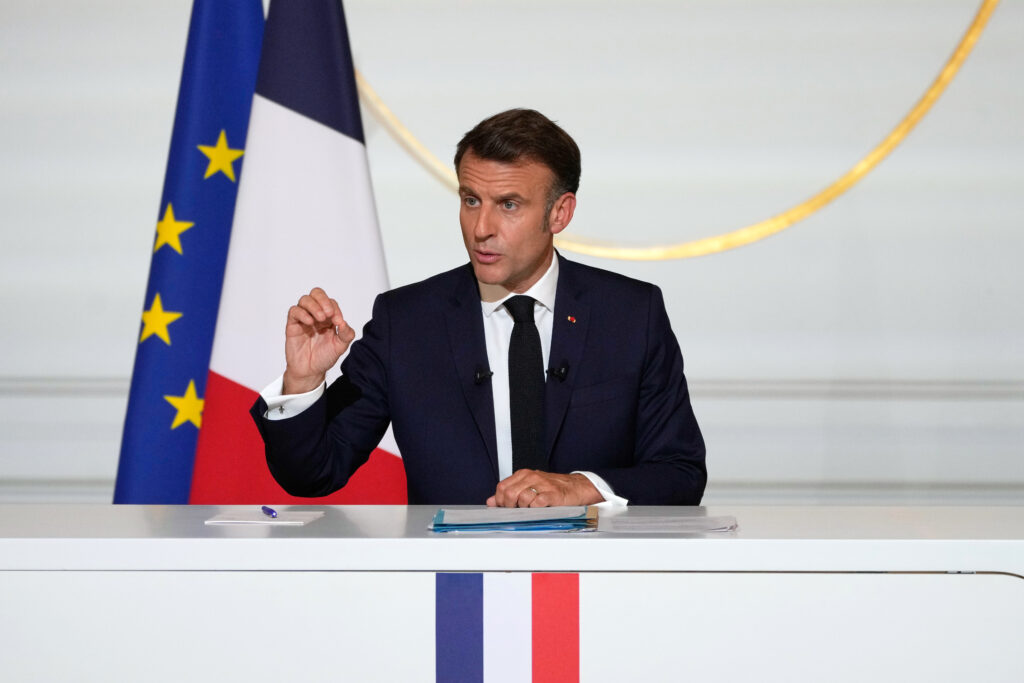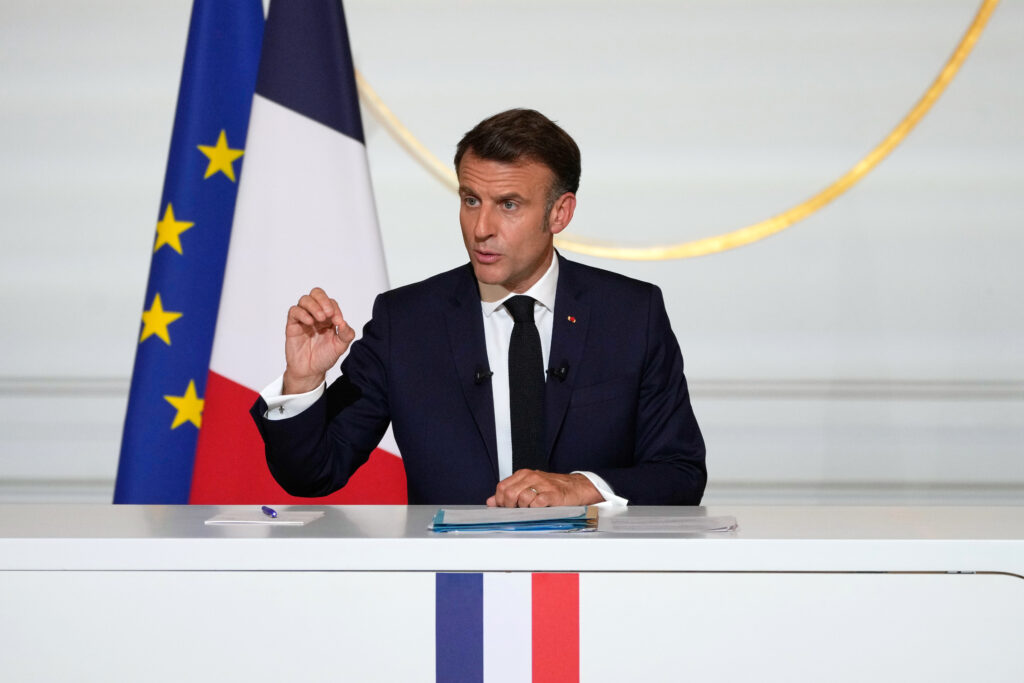L’Iran lance des missiles sur Israël en riposte à une attaque massive sur son sol
L’Iran a lancé vendredi soir des dizaines de missiles contre Israël, en riposte aux frappes aériennes israéliennes d’une ampleur sans précédent qui ont visé depuis le matin plus de 200 sites militaires et nucléaires sur le sol iranien.Les sirènes d’alerte ont retenti à travers tout le pays, tandis que des volutes de fumée s’élevaient au-dessus de Tel-Aviv, la grande ville du centre d’Israël, peu après un appel lancé à la population à rejoindre les abris.Au moins deux vagues de dizaines de missiles balistiques iraniens ont visé Israël, a annoncé l’armée israélienne tandis que l’Iran a affirmé viser “des dizaines de cibles”, “de bases et d’infrastructures militaires” en Israël. Israël s’attend à être exposé “à plusieurs vagues d’attaques iraniennes”, avait prévenu peu avant le Premier ministre, Benjamin Netanyahu, après les frappes d’une ampleur sans précédent menées sur l’Iran.L’attaque lancée tôt vendredi a tué les plus hauts gradés iraniens, le chef d’état-major de l’armée, le chef des Gardiens de la Révolution, l’armée idéologique de la République islamique, et le commandant de sa force aérospatiale. Dans la soirée, l’armée israélienne a annoncé avoir “démantelé” une usine d’uranium à Ispahan, dans le centre de l’Iran, a la suite d’une frappe. Plusieurs explosions ont été entendues à Téhéran et dans ses environs, selon les médias qui ont aussi fait état, notamment, d’une nouvelle frappe sur le centre d’enrichissement d’uranium de Natanz, dans le centre de l’Iran. “Nous continuons à pleine force, à un rythme élevé, afin d’atteindre les objectifs que nous nous sommes fixés”, a déclaré dans la soirée le chef d’état-major de l’armée israélienne, le lieutenant-général Eyal Zamir.Cette attaque fait suite à des pressions grandissantes exercées sur l’Iran, soupçonné par les Occidentaux et par Israël de vouloir se doter de l’arme atomique. Téhéran dément et défend son droit à mener un programme nucléaire civil.L’attaque intervient aussi à deux jours d’un nouveau cycle de négociations indirectes, dont la tenue est désormais incertaine, prévu dimanche à Oman entre Téhéran et Washington sur le programme nucléaire iranien.- “Déclaration de guerre” -Le ministre iranien des Affaires étrangères, Abbas Araghchi, a qualifié de “déclaration de guerre” l’attaque israélienne et affirmé que la riposte de son pays serait “assurément vigoureuse”.Aussitôt nommé, le nouveau chef des Gardiens de la Révolution, Mohammad Pakpour, a promis à Israël “les portes de l’enfer” après ces frappes qui ont visé notamment Téhéran et fait 18 morts dans le nord-ouest du pays, selon un média.Alors que les appels à la désescalade se multiplient à travers le monde, le Conseil de sécurité de l’ONU doit se réunir vendredi à la demande de l’Iran.”Mort à Israël, mort à l’Amérique!”, criaient des Iraniens venus manifester dans le centre de Téhéran, où les rues étaient désertes à l’exception de files d’attente devant les stations-service.Ahmad Moadi, un retraité de 62 ans, a appelé à une “réponse cinglante” contre Israël, un pays non reconnu par l’Iran.Benjamin Netanyahu a averti que l’opération militaire durerait “de nombreux jours” et qu’Israël avait frappé “au coeur du programme de missiles balistiques de l’Iran”.L’armée israélienne a affirmé que l’Iran avait la capacité de nuire “considérablement” à Israël et dit disposer de renseignements prouvant que Téhéran s’approchait du “point de non-retour” vers la bombe atomique. Selon elle, “le régime iranien avait un plan concret pour détruire l’Etat d’Israël”.En Israël, des habitants témoignaient vendredi de leur inquiétude. “Je suis inquiète pour mes enfants et aussi pour mes moyens de subsistance, car cela affecte le marché. On ne peut pas travailler, on ne peut rien faire”, déplorait Vered Saar, une pâtissière de Tel-Aviv âgée de 54 ans. L’armée israélienne a indiqué qu’environ 200 avions avaient participé aux premières heures de l’attaque, à laquelle l’Iran a riposté en lançant “environ 100 drones” vers Israël, qui ont été interceptés.Tôt vendredi, le général Hossein Salami, chef des Gardiens de la Révolution, ainsi que d’autres responsables dont le commandant de la force aérospatiale des Gardiens, Ali Hajizadeh, ont été tués dans une frappe sur leur quartier général. Le chef d’état-major iranien, le général Mohammad Bagheri, et six scientifiques du programme nucléaire iranien ont également péri dans des frappes.Le site de Natanz a été visé “plusieurs fois”, selon la télévision d’Etat iranienne, qui a montré une épaisse fumée noire s’en élevant.Selon l’Agence internationale de l’énergie atomique (AIEA), “aucune augmentation des niveaux de radiation” n’a cependant été observée à Natanz. – “Encore plus brutales” -Le président américain Donald Trump a exhorté l’Iran à “conclure un accord” sur le nucléaire “avant qu’il ne reste plus rien” et prévenu que les “prochaines attaques” seraient “encore plus brutales”. La dernière attaque israélienne contre l’Iran annoncée publiquement remonte à octobre 2024, quand Israël avait dit avoir mené des raids aériens sur des cibles militaires en représailles au tir de quelque 200 missiles iraniens vers son territoire.Fawaz Gerges, professeur de relations internationales à la London School of Economics, a estimé qu’Israël avait “déclaré une guerre totale contre l’Iran”.Signe de l’extrême fébrilité dans la région, de nombreuses compagnies aériennes ont supprimé ou dérouté des dizaines de vols, tandis que les cours du pétrole ont flambé.Plusieurs ambassades d’Israël à travers le monde ont fermé au public. Téhéran avait menacé mercredi de frapper les bases militaires américaines au Moyen-Orient en cas de conflit après un éventuel échec des négociations en cours, visant à encadrer le programme nucléaire iranien en échange d’une levée des lourdes sanctions frappant l’Iran.L’enrichissement de l’uranium est la principale pierre d’achoppement dans ces discussions, Washington exigeant que l’Iran y renonce totalement, ce que Téhéran refuse.L’Iran est le seul Etat non doté d’armes nucléaires à enrichir de l’uranium au niveau de 60%, selon l’AIEA, alors qu’un seuil de 90% est nécessaire à la fabrication d’une bombe atomique.
